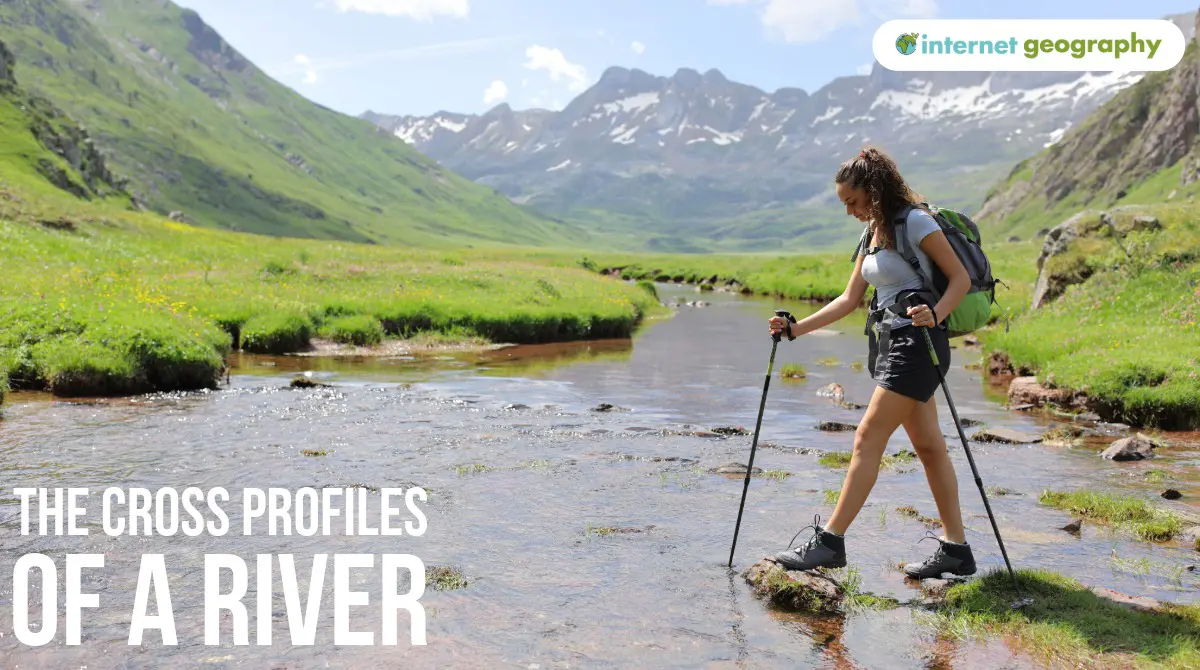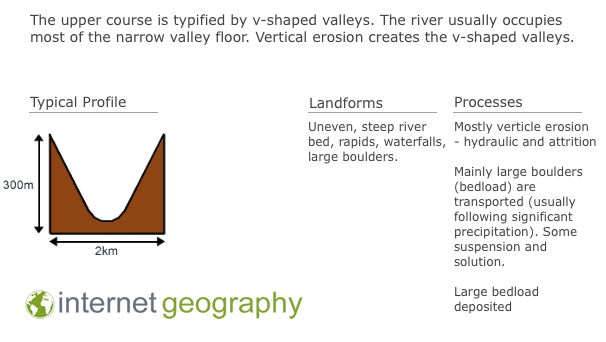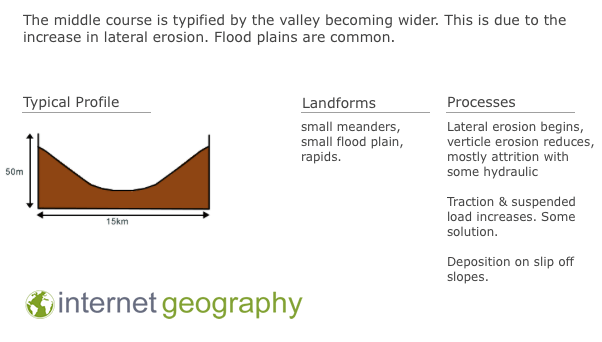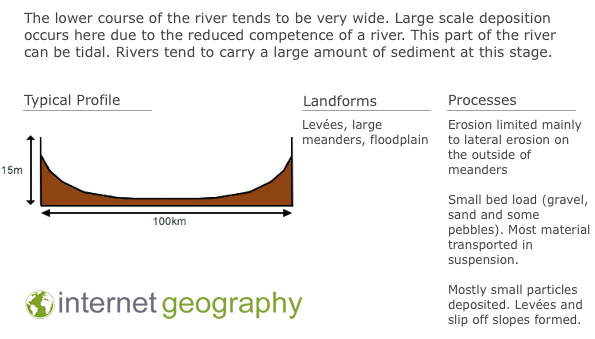Cross-profiles of a river
What is a cross-profile?
The cross profile of a river refers to a section taken sideways across the river channel or valley. There are two main types:
- Channel Cross Profile: Includes only the river itself.
- Valley Cross Profile: Encompasses the river channel, the valley floor, and the slopes of the valley sides.
How and why does a channel cross-profile change downstream?
How does the cross profile of a river change?
There are three main sections along the long profile of a river. These are the upper, middle and lower courses. Each has its channel cross-profile features.
Why does it change?
The river erodes its bed in the upper course by hydraulic action and abrasion. As it flows downstream, it is joined by tributaries, increasing the volume of water, velocity, and, therefore, its erosive power. This enables it to cut a deeper channel as it flows downstream.
Downstream, the channel becomes wider as the gradient becomes gentler, leading to less vertical erosion. By the middle course of the river, lateral erosion becomes the dominant type of erosion. The channel widens due to lateral erosion.
How and why does a valley cross profile change downstream?
How does it change?
In the upper course, the valley cross profile is narrow and steep-sided. The river takes up most of the valley floor. In the middle course, the valley becomes wider due to lateral erosion. The valley is almost flat along the lower course, with a wide floodplain.
Why does it change?
The upper course typically has a steep, V-shaped cross profile. This is due to the river’s vertical erosion combined with weathering and mass movement of the valley slopes.
In the middle course, the river flows through lower-lying land. The gradient is gentler, so the river begins to meander (bend). As this occurs, the dominant type of erosion shifts to lateral, eroding the valley sides. This makes the valley broader, and the rate of weathering increases on the softer rocks of the valley sides.
In the lower course, the river passes through the low-lying country. Flooding results in deposition, building up the floodplain, and, along with migrating meanders, further widens the valley.




